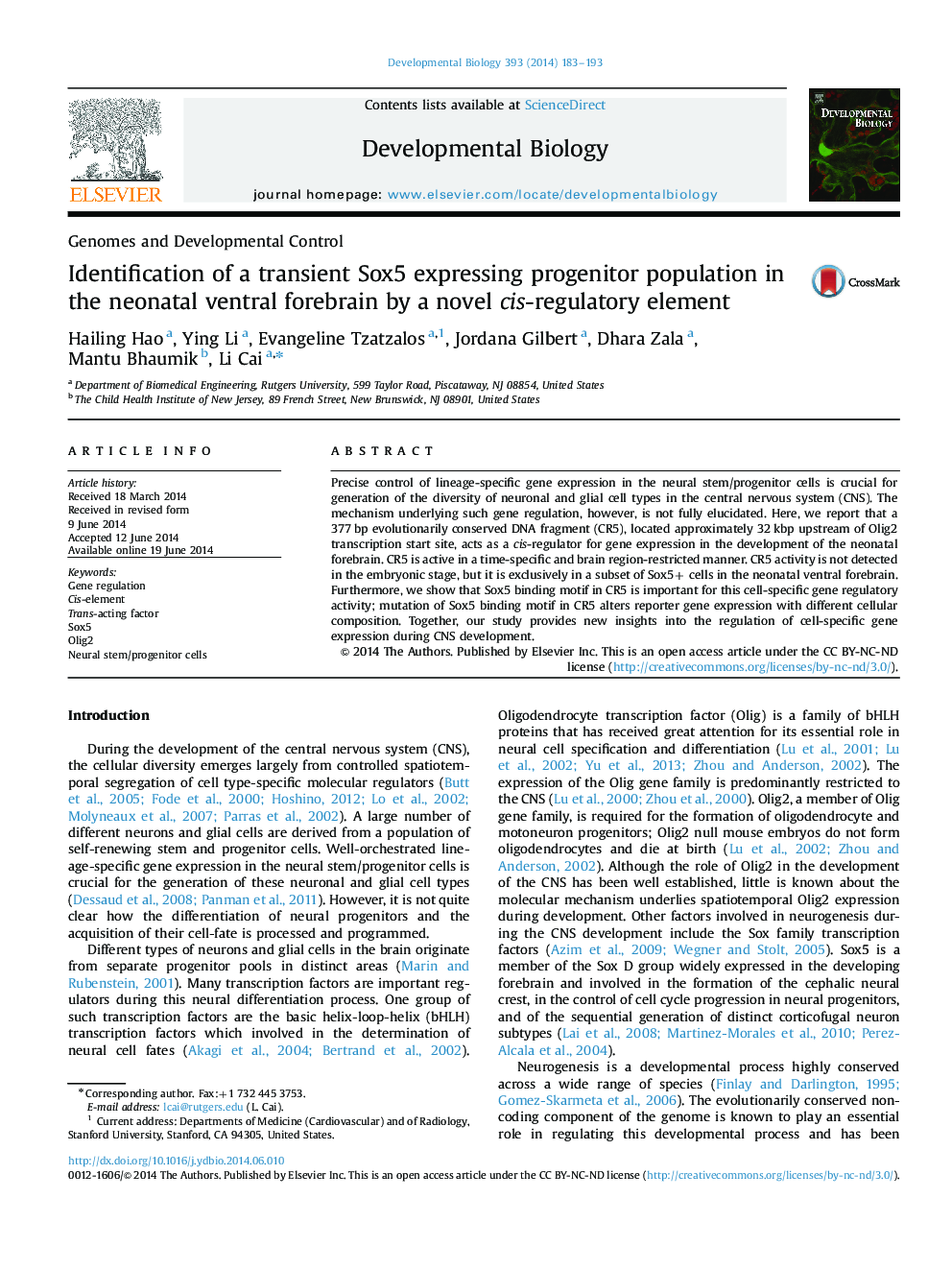| Article ID | Journal | Published Year | Pages | File Type |
|---|---|---|---|---|
| 10931685 | Developmental Biology | 2014 | 11 Pages |
Abstract
Precise control of lineage-specific gene expression in the neural stem/progenitor cells is crucial for generation of the diversity of neuronal and glial cell types in the central nervous system (CNS). The mechanism underlying such gene regulation, however, is not fully elucidated. Here, we report that a 377Â bp evolutionarily conserved DNA fragment (CR5), located approximately 32Â kbp upstream of Olig2 transcription start site, acts as a cis-regulator for gene expression in the development of the neonatal forebrain. CR5 is active in a time-specific and brain region-restricted manner. CR5 activity is not detected in the embryonic stage, but it is exclusively in a subset of Sox5+ cells in the neonatal ventral forebrain. Furthermore, we show that Sox5 binding motif in CR5 is important for this cell-specific gene regulatory activity; mutation of Sox5 binding motif in CR5 alters reporter gene expression with different cellular composition. Together, our study provides new insights into the regulation of cell-specific gene expression during CNS development.
Related Topics
Life Sciences
Biochemistry, Genetics and Molecular Biology
Cell Biology
Authors
Hailing Hao, Ying Li, Evangeline Tzatzalos, Jordana Gilbert, Dhara Zala, Mantu Bhaumik, Li Cai,
